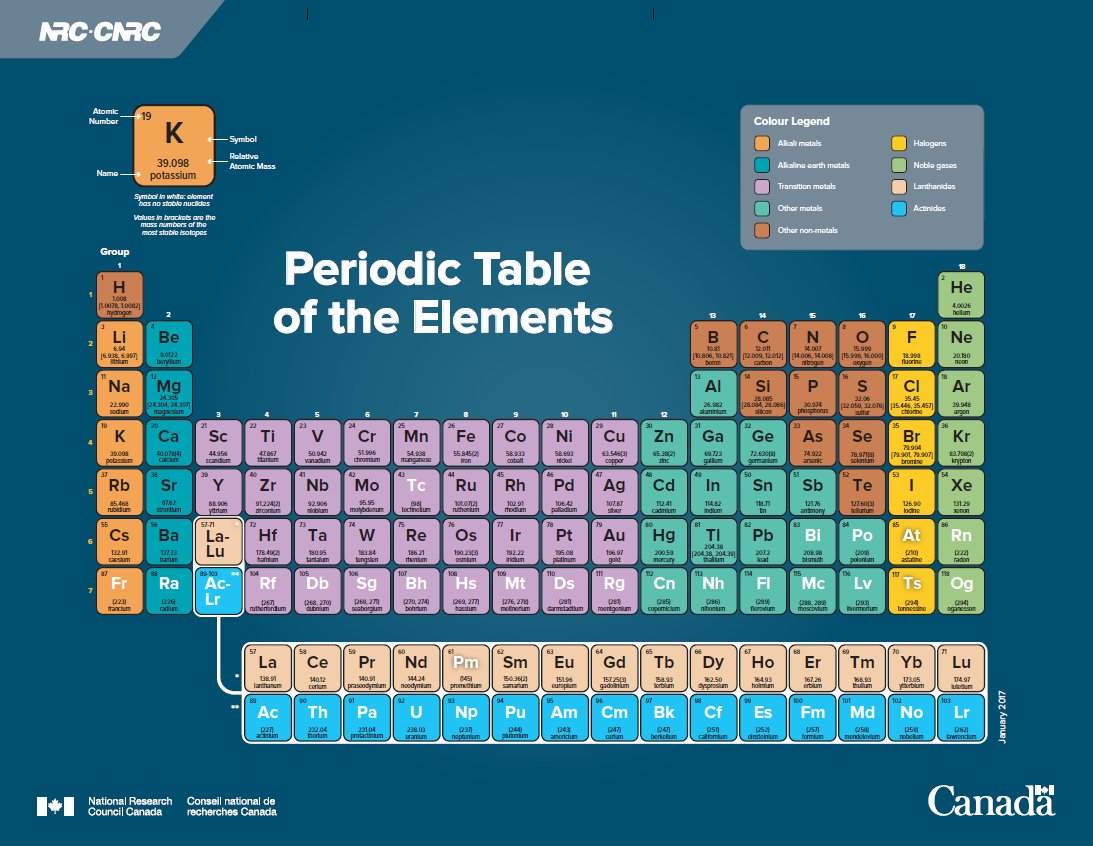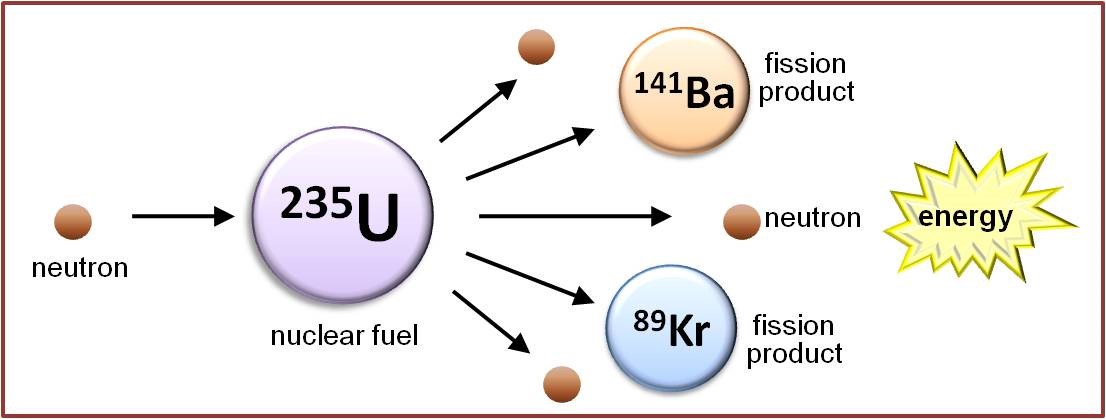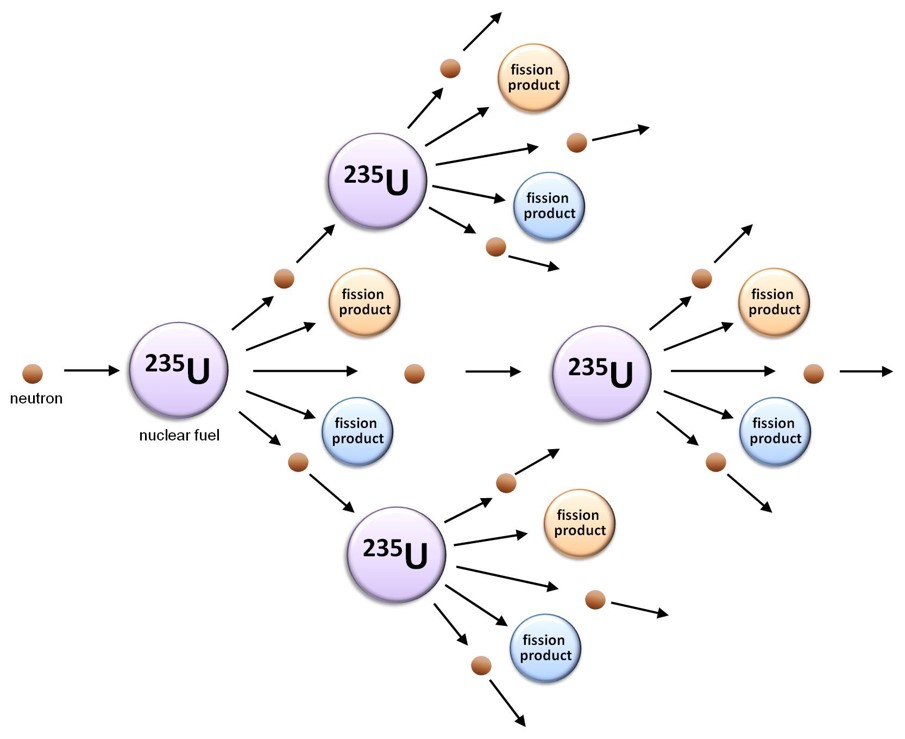What is “Nuclear Fission”?
Nuclear fission is a naturally occurring phenomenon during which an atomic nucleus is divided into two or more parts. This is often accompanied by the emission of neutrons, charged fragments such as alpha particles, and energy in the form of gamma or X-rays. Nuclear fission only occurs in the heaviest elements of the periodic table: principally, the actinoid series, but more generally, those with atomic weights greater than 232 atomic mass units. Examples of materials in nature that spontaneously undergo nuclear fission are uranium-235 (an atomic nucleus containing 92 protons and 143 neutrons) and thorium-232 (90 protons and 142 neutrons). Despite being a spontaneous process, fission of these nuclei occurs very slowly in nature: the fission half-life of uranium-235 is 1.2 x 1017 years, which corresponds to one fission per gram per hour.

Induced Nuclear Fission
In addition to nuclei that fission spontaneously, many other atomic nuclei can be induced to undergo nuclear fission by bombarding them with sub-atomic particles. For example, a slow-moving or “thermal” neutron can be absorbed into the nucleus of an atom, rendering it unstable and causing it to fission instantly. Nuclei that are susceptible to this “induced nuclear fission” include plutonium-239 and uranium-233. Neutron bombardment can also be used to increase the rate of nuclear fission in nuclei that undergo this process spontaneously, such as uranium-235 (see Figure).

Nuclear Chain Reactions
Looking more closely at the figure above, it becomes evident that the nuclear fission of uranium-235 produces more neutrons (three in this example) than it consumes (one). This suggests the possibility that the neutrons released when one uranium-235 nucleus undergoes fission can induce the fission of up to three neighbouring uranium-235 nuclei, each of which will also release neutrons as it fissions, which can interact with other uranium-235 atoms, and so on, thus creating a self-sustaining nuclear chain reaction. It is this chain reaction that provides the basis for nuclear research reactors and nuclear power, as it releases not only neutrons and fission products, but also large quantities of energy.

